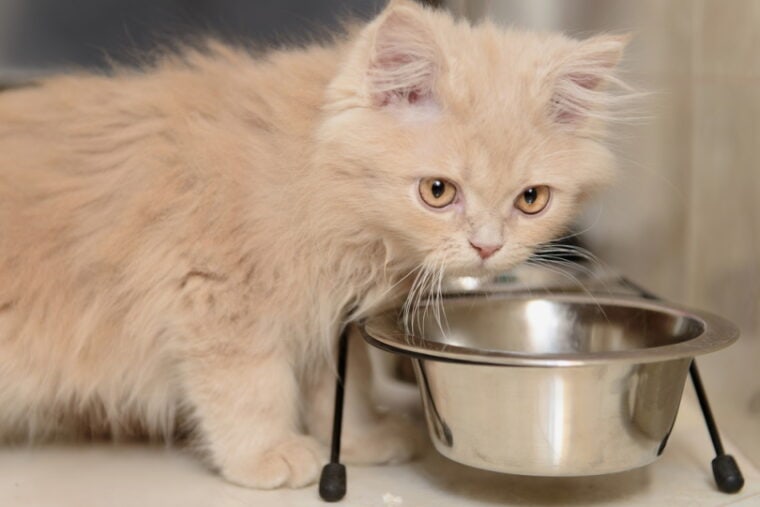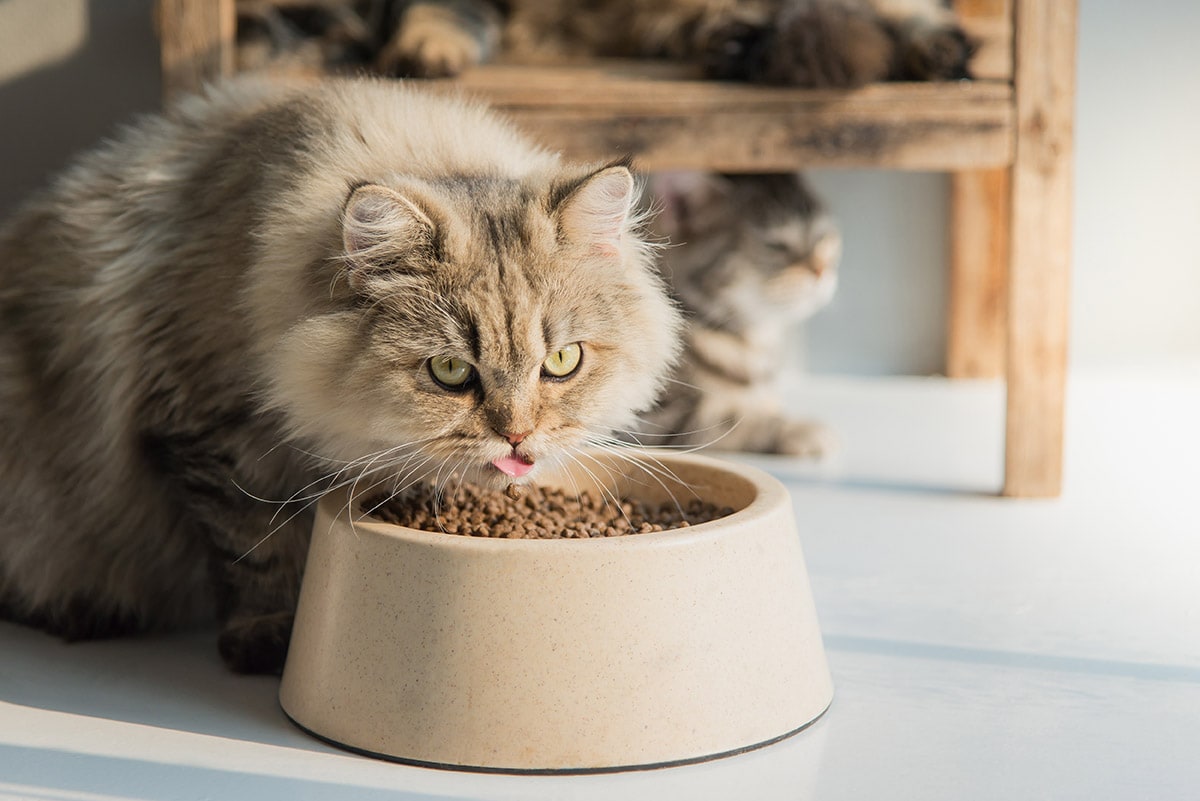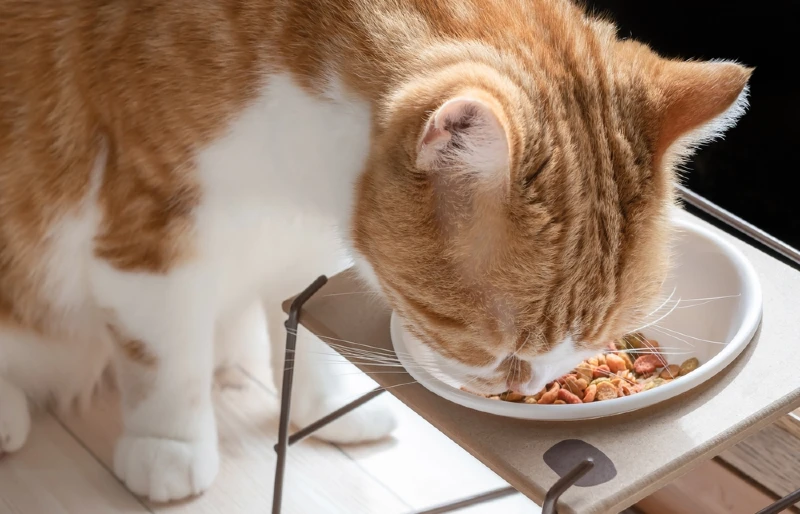
If you’ve just watched your cat eat a meal and vomit it back up, you might wonder if anti-vomiting cat bowls work. The most honest answer we can give is “maybe.” There are many reasons why your cat may vomit after eating, many of which require your cat to get a medical checkup and subsequent treatment.
However, in the absence of any underlying medical reason, a special bowl might help your cat with its vomiting problem. They aren’t always practical for every cat, but there are options, and we’ll take a look at them in this article.
Regurgitation or Vomiting?
While some cats have no problem controlling their food intake, others will struggle and almost inhale their food as soon as it’s set down. You might find, in some cases, this results in the food coming back up before it’s been digested, which is called regurgitation.
Regurgitation is different from vomiting because the food doesn’t reach the stomach before it’s expelled. On the other hand, vomiting refers to the emptying of the stomach. Frequent vomiting should always be brought to your vet’s attention, but if your cat regurgitates its food every so often, you might find that switching the bowls will help.
Elevated bowls are sometimes referred to as anti-vomit cat bowls. Since they’re elevated, your cat can eat in a more neutral position. Of course, they should never be used as a substitute for proper veterinary care. Always contact your vet if there is a change in your cat’s eating habits.

How Do Elevated Cat Bowls Help?
Elevated bowls were initially designed for dogs to prevent a potentially life-threatening condition called bloat or gastric dilatation-volvulus, but now, elevated cat bowls have also become popular.
There is little scientific evidence to support that elevated pet food bowls help, but there is anecdotal evidence from pet parents that their cats find it a more comfortable position to eat in. This is particularly true for older cats or those suffering from obesity or osteoarthritis. Unlike one that sits on the floor, an elevated bowl allows your cat to adopt a more natural neck position, which will support smoother digestion.
There are also options for tilted, elevated bowls, which means your cat can walk right up to the food without changing positions to eat. An important part about elevated bowls to keep in mind, especially in terms of the tilted models, is that the height of the bowl matters!
Small cats and kittens may only need an inch or two of elevation compared to taller cats. Choosing an elevated bowl that is too high for your cat could be ineffective or contribute to new problems.

Anti-Vomit Cat Bowls Prevent Whisker Fatigue
When felines eat from small bowls that contact their whiskers, they can get something known as “whisker fatigue.” This term isn’t universally accepted among veterinary professionals, but we’re mentioning it because you might have heard of it before.
Whisker fatigue refers to the discomfort and overstimulation your cat might experience when eating from a bowl deep or small enough that its whiskers continuously touch the sides of the bowl.
This overstimulation can make them feel agitated or stressed, which are not feelings conducive to a happy mealtime. Whether whisker fatigue exists or not, your cat’s comfort is essential.
Are Slow Feeders Good for Cats?
Another option you might consider is a slow feeder bowl. They reduce the likelihood of your cat scarfing and vomiting because it forces them to eat slowly, minimizing the chances of vomiting up what they’ve just eaten. There are also food puzzles, which are great for mental stimulation.
They don’t work for every cat, particularly picky eaters, diabetics, or elderly cats. Many slow-feeder bowls are designed for dry kibble, but you can get some for wet food; for example, a lick mat would work.

Final Thoughts
If your cat can’t get through a meal comfortably without regurgitating it back up, an anti-vomiting cat bowl might be a good option for you. An elevated bowl allows your cat to eat in a more natural position. However, before you purchase one, ensure your cat is not suffering from a medical condition by taking the feline to your veterinarian.
Featured Image Credit: Inna Astakhova, Shutterstock








